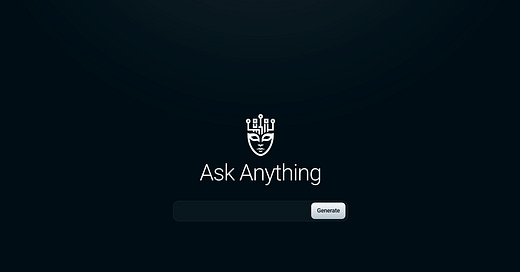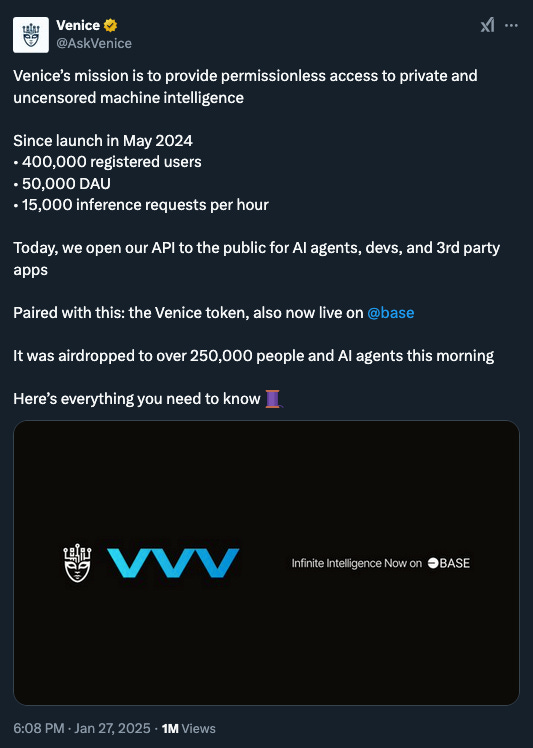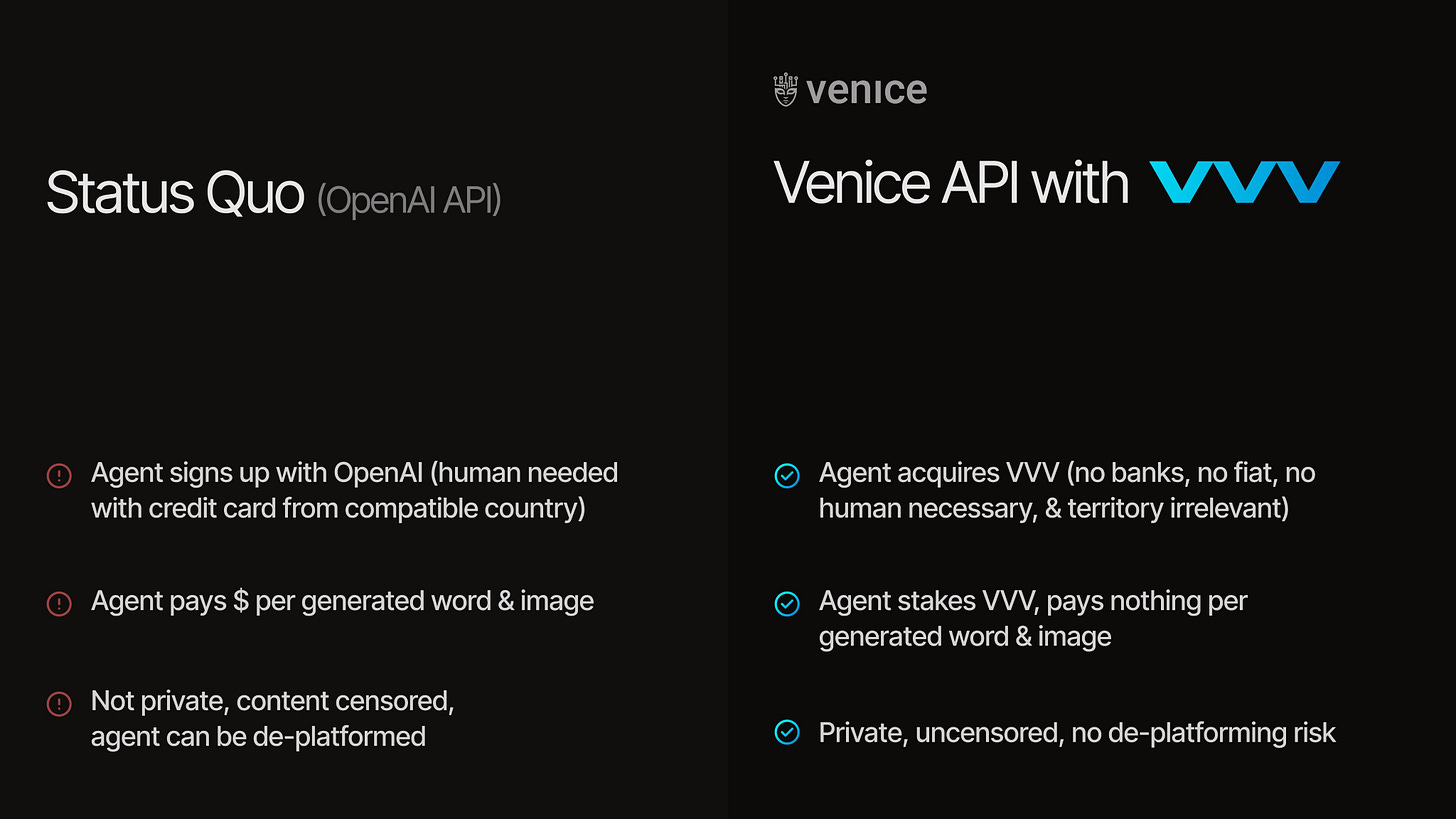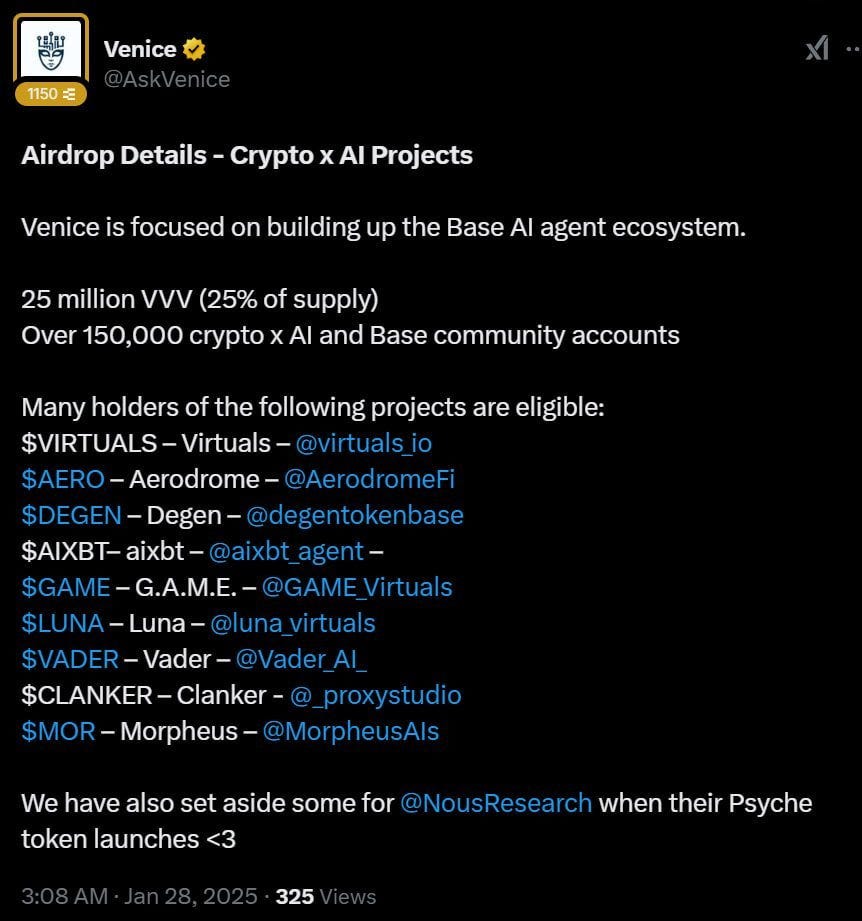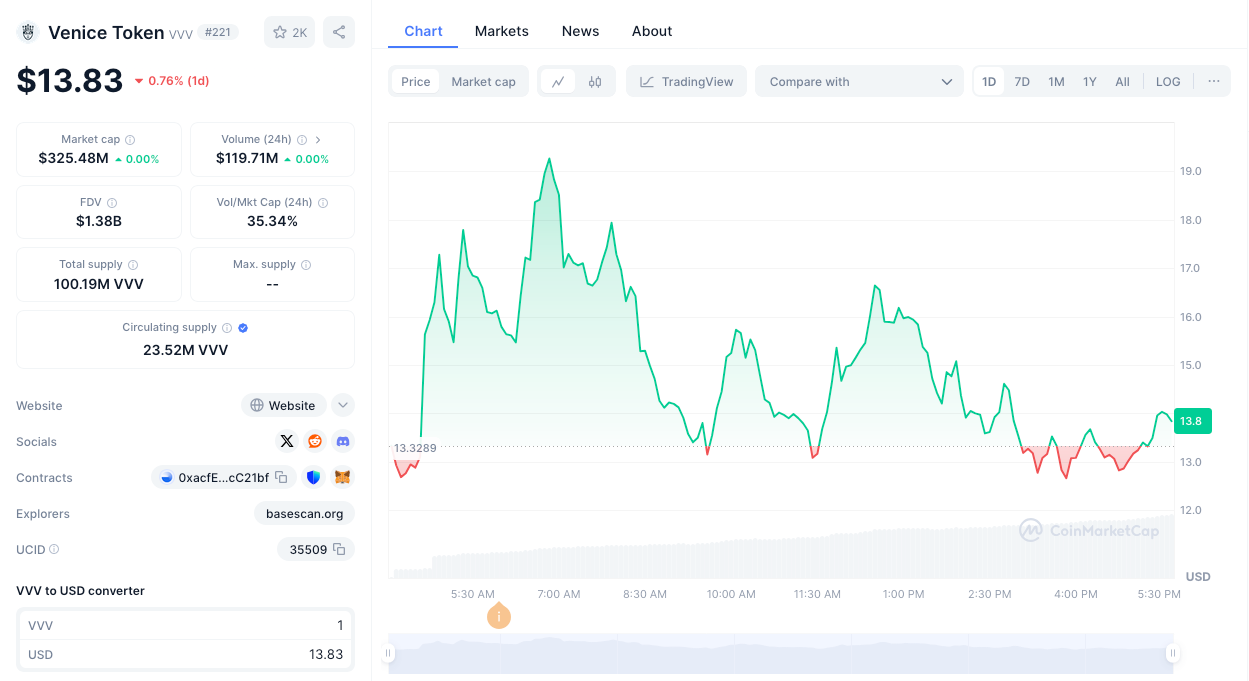Venice AI: The Crypto ChatGPT and Potentially More
In this deep dive, we explore Venice AI features, airdrop, privacy, tokenomics, and its role in the agentic economy’s evolution
Hi friends,
Welcome to another deep dive. Today we are reviewing Venice AI, a project that aims to replicate the success of the likes of ChatGPT, Perplexity AI and Claude, but natively on the blockchain. There is a lot to unpack here, from technicalities, an airdrop, and an innovation that has the potential to be the heart of crypto and AI.
In today’s deep dive, we’ll cover
What is Venice AI?
How does it work and what makes it special?
The VVV token and airdrop
How to invest and stake VVV
The founding team and day 1 selling claims
Venice AI potential in the agentic economy
What’s Venice AI?
Venice AI is a next-generation AI platform powered by blockchain technology. Unlike traditional AI models, Venice AI integrates crypto capabilities, allowing users to interact with AI in a decentralized and transparent way. Think of it as ChatGPT meets blockchain—except Venice AI aims to be more open, private, and community-driven.
The project is built on Base L2, a Layer 2 scaling solution for Ethereum, which ensures fast, low-cost transactions while maintaining the security and decentralization of the Ethereum network. This makes Venice AI a standout in the crowded AI space, especially for those who value decentralization and transparency.
Since its launch in May 2024, the project have seen 400,000 registered users, 50,000 daily active users, and 15,000 inference requests per hour. Yesterday, Venice AI opened their API to the public and listed their official token, $VVV.
How Does Venice AI Work?
Venice AI operates on a distinct model that combines AI-powered tools with blockchain technology, powered by its native cryptocurrency, $VVV. Unlike other AI platforms, Venice AI allows users to choose from a variety of large language models (LLMs) based on their specific needs. Whether it’s OpenAI’s GPT, Anthropic’s Claude, Meta’s LLaMA, or the newly released DeepSeek, the platform offers flexibility, giving users the ability to select the model best suited for their tasks. This adaptability sets Venice AI apart from traditional, single-model AI services.
The integration of blockchain technology plays a crucial role in Venice AI’s infrastructure. Additionally, users can stake $VVV tokens to contribute to network security, earn rewards, and access premium features like Venice AI Pro. While the basic services are accessible to anyone, staking or using $VVV tokens unlocks enhanced capabilities, creating a tiered experience for users. More on this and its potential later…
Venice AI: A Focus on Censorship Resistance and Privacy
Venice AI positions itself as a private and uncensored alternative to the major centralized AI platforms, claiming to offer greater user privacy and freedom. The platform touts its use of open-source AI models and a commitment to keeping user data off its servers. But how does it really work, and what are the trade-offs?
Privacy Claims
According to Venice AI, user prompts and data are stored only on the user’s device, not on its servers. The platform states it doesn’t record conversations or responses, with the exception of basic data like email and IP addresses. Venice frames this as a safeguard against surveillance and data-sharing, suggesting that its infrastructure is designed to prevent corporations or governments from accessing user information.
While this sounds appealing, it raises questions about feasibility and security. Without server-side data handling, can Venice maintain reliable services, particularly for complex AI interactions? And how do they ensure this privacy model scales with broader adoption?
In this X thread, a user points out that Venice AI doesn’t encrypt user information, therefore they do receive most of the data. It’s founder, replied:
Venice's architecture is described here: https://venice.ai/blog/venice-ai-privacy-architecture
This is *very private* compared to any centralized inference provider.
It is not as private as just running locally. Venice isn't seeing/storing any of the prompts or responses. We don't yet have the capability to prove that, but we will get there.
Erik Voorhees
Censorship Resistance
Venice claims to deliver “uncensored” machine intelligence, contrasting itself with centralized AI companies that allegedly impose significant filters and biases. While some moderation exists through a “Safe Venice” mode for adult content (which can be disabled by Pro users), the platform maintains that it does not censor responses at the request of governments or corporations.
This approach highlights an ongoing debate in the AI space: where is the line between free expression and responsible content moderation? While the promise of neutrality is compelling, it also opens the door to potential misuse of the platform, especially in scenarios where harmful or misleading content could spread unchecked.
Abliterated Models
One of Venice AI’s unique selling points is its use of abliterated models—Large Language Models (LLMs) that have been modified through a process called abliteration. This process removes or suppresses built-in restrictions, theoretically resulting in more transparent and uncensored AI outputs.
The concept sounds intriguing, but it’s worth asking how such modifications impact the reliability and ethical behavior of these models. If censorship is removed, what mechanisms (if any) remain to prevent the spread of harmful or biased outputs? For those interested, more about abliteration can be found in the Hugging Face blog.
The $VVV Token: Venice AI’s Crypto Backbone
The $VVV token is the heart of Venice AI’s ecosystem and can be used to pay for AI services, stake for rewards, and participate in governance.
Venice AI conducted an airdrop to reward early adopters and different communities. The snapshot was taken on December 31st, 2024 and includes AI related crypto coins that I’ve written about in the past, like Clanker, Degen, AIXBT, Luna and Virtuals — so if you have been reading the newsletter you probably have VVV to claim.
Here is the list of communities and coins that were included in the snapshot:
$Virtuals by Virtuals Protocol
$Aero by Aerodrome
$Degen
$AIXBT
$GAME
$Luna
$Vader
$Clanker
$Mor
Here is the official website to claim your VVV airdrop.
How to Buy $VVV?
To purchase $VVV tokens, head to a decentralized exchange (DEX) like Uniswap. Simply connect your wallet, make sure you are on the Base network and swap your cryptocurrency (e.g., ETH) for $VVV, and you’re good to go. $VVV was also listed on the centralized exchange (CEX) Coinbase just a few hours after its launch, providing an additional option for buyers.
The official $VVV token contract address is:0xacfE6019Ed1A7Dc6f7B508C02d1b04ec88cC21bf
How to Stake Venice AI tokens?
Stake your $VVV tokens to earn rewards, help secure the network, and unlock premium features like Venice AI Pro. Staking is an excellent way to maximize the utility of your tokens, currently giving returns of over 500% per year. So if you stake 10 VVV (~$100), at the current rate, you will get 50 VVV (~$500) back.


